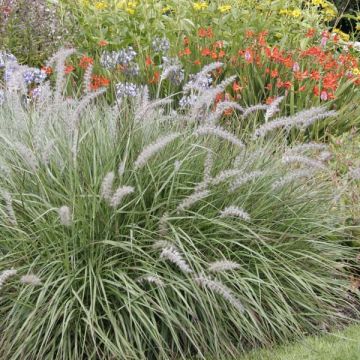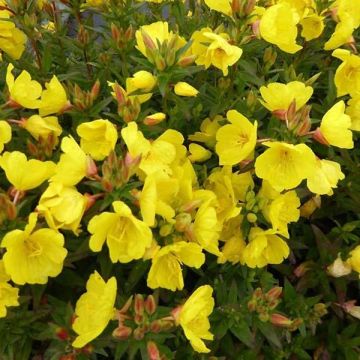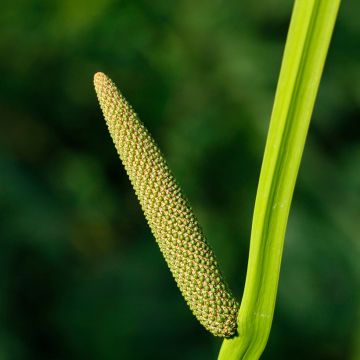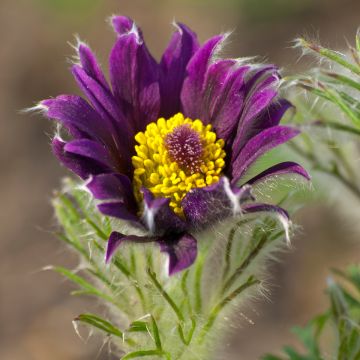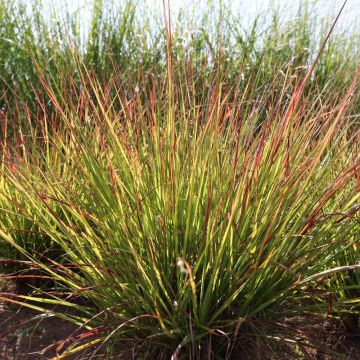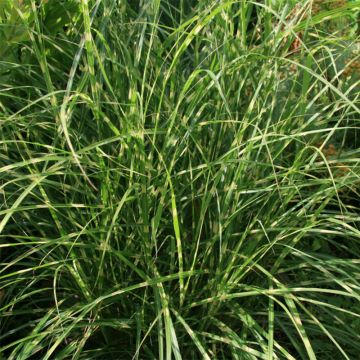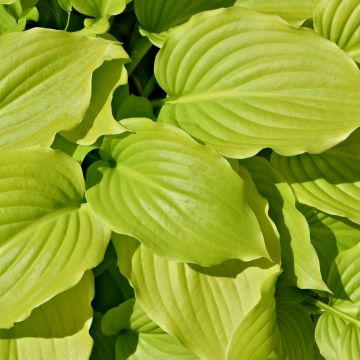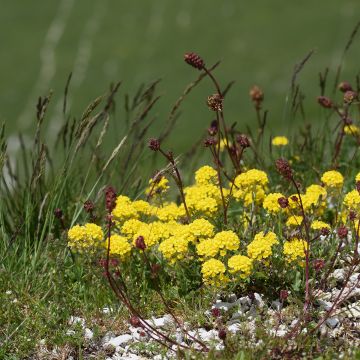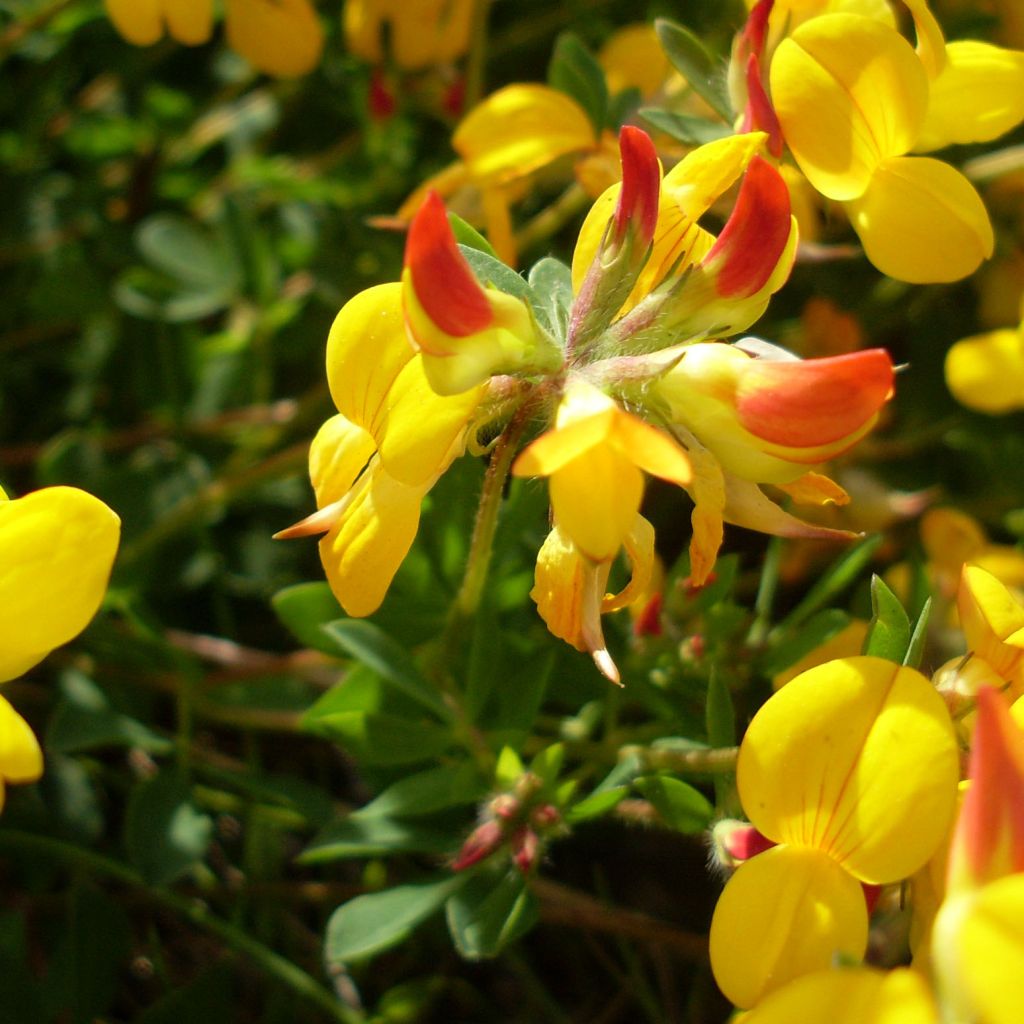

Lotus corniculatus Plenus
Lotus corniculatus Plenus
Lotus corniculatus Plenus
Bird's-foot trefoil
This item cannot be shipped to the selected country
Delivery charge from €5.90
More information
Schedule delivery date,
and select date in basket
This plant carries a 12 months recovery warranty
More information
We guarantee the quality of our plants for a full growing cycle, and will replace at our expense any plant that fails to recover under normal climatic and planting conditions.
From €5.90 for pickup delivery and €6.90 for home delivery
Express home delivery from €8.90.
Does this plant fit my garden?
Set up your Plantfit profile →
Description
Lotus corniculatus Plenus, also known as Common Bird's-foot Trefoil or Horned Lotus, is an undershrub with clover-like leaves and pea-like flowers, offering clusters of double golden-yellow flowers from spring to late summer. Drought-resistant and evergreen in mild winters, this plant deeply anchors its roots and covers the ground. Robust and undemanding, sun-loving, it generously spreads in rocky areas, above walls, where it cascades like a rain of gold, infinitely graceful.
Lotus corniculatus Plenus belongs to the Fabaceae family. It is the double form of Lotus corniculatus, a cosmopolitan plant found in meadows, woods, fields, and slopes, throughout France and Corsica. It is a perennial, forming an undershrub, a dense and spreading tuft, with a semi-rampant habit, measuring 10 to 15 cm (4 to 6in) in height, spreading up to 30 cm (12in). The flowering period is particularly long and bright, melliferous, delighting both bees and gardeners from May-June until September-October. The pea-like flowers, keeled and double, in small clusters, range from intense yellow to coppery if the plant grows at higher altitudes. The semi-evergreen to evergreen foliage is composed of small leaves, with rounded leaflets of a beautiful bright green. Like clover, its leaves have a particular arrangement. They are composed of 3 leaflets and are arranged along solid or slightly hollow stems, either prostrate or ascending. The flowering is followed by the formation of cylindrical and elongated pods, terminated by a small beak that gave the plant its name. When mature, they project the seeds far away. The empty, dry pod resembles a houndstooth pattern. This plant has an extensive and deep root system, allowing it to stabilize the soil in which it thrives.
Double-flowered bird's-foot trefoil is a plant for well-drained soils and full sun. Plant it in rocky areas, along gravel paths, on slopes, above walls. In these settings, it can be associated with creeping rosemary, Geranium traversii or endressii, yarrows, aethionemas, cotula hispida, dianthus erinaceus, frankenia laevis.
Lotus corniculatus was formerly used to produce a yellow dye. It is used as a green manure because, like many Fabaceae, its roots fix nitrogen. This plant has recognized medicinal properties, such as being an antispasmodic and a cardiac tonic.
Report an error about the product description
Lotus corniculatus Plenus in pictures
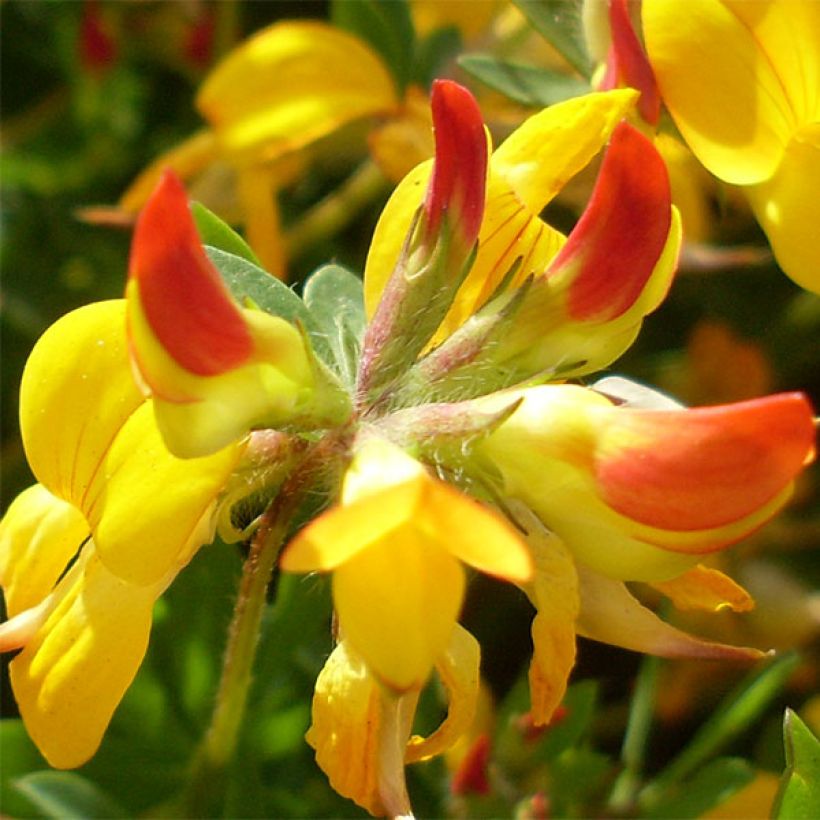

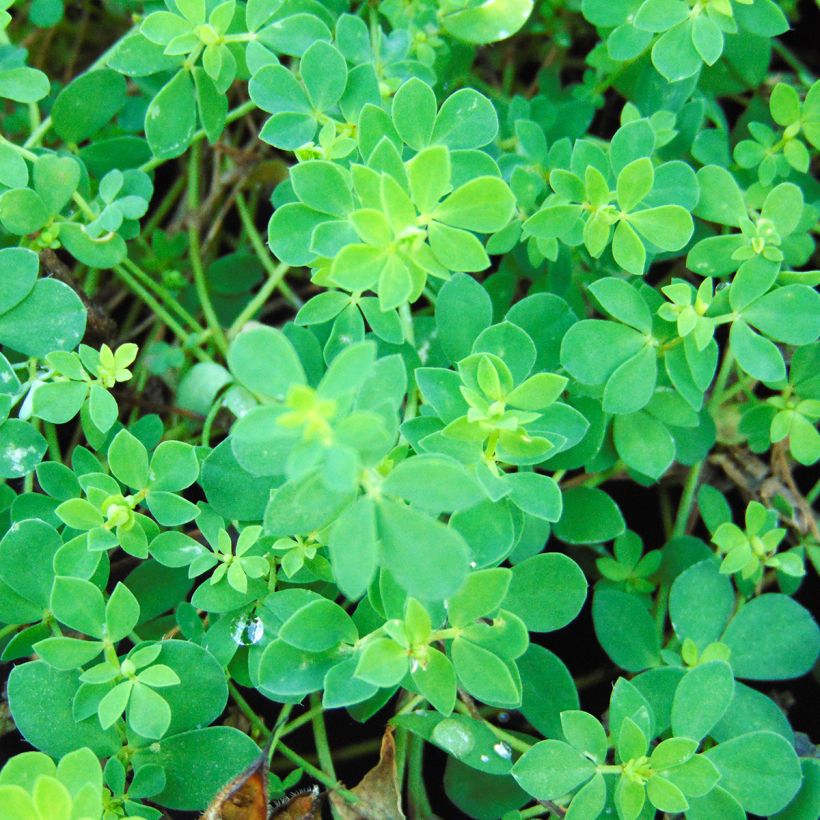

Flowering
Foliage
Plant habit
Botanical data
Lotus
corniculatus
Plenus
Fabaceae
Bird's-foot trefoil
Cultivar or hybrid
Other Perennials A to Z
Planting and care
Planting period
Intended location
Care
-
, onOrder confirmed
Reply from on Promesse de fleurs
Haven't found what you were looking for?
Hardiness is the lowest winter temperature a plant can endure without suffering serious damage or even dying. However, hardiness is affected by location (a sheltered area, such as a patio), protection (winter cover) and soil type (hardiness is improved by well-drained soil).

Photo Sharing Terms & Conditions
In order to encourage gardeners to interact and share their experiences, Promesse de fleurs offers various media enabling content to be uploaded onto its Site - in particular via the ‘Photo sharing’ module.
The User agrees to refrain from:
- Posting any content that is illegal, prejudicial, insulting, racist, inciteful to hatred, revisionist, contrary to public decency, that infringes on privacy or on the privacy rights of third parties, in particular the publicity rights of persons and goods, intellectual property rights, or the right to privacy.
- Submitting content on behalf of a third party;
- Impersonate the identity of a third party and/or publish any personal information about a third party;
In general, the User undertakes to refrain from any unethical behaviour.
All Content (in particular text, comments, files, images, photos, videos, creative works, etc.), which may be subject to property or intellectual property rights, image or other private rights, shall remain the property of the User, subject to the limited rights granted by the terms of the licence granted by Promesse de fleurs as stated below. Users are at liberty to publish or not to publish such Content on the Site, notably via the ‘Photo Sharing’ facility, and accept that this Content shall be made public and freely accessible, notably on the Internet.
Users further acknowledge, undertake to have ,and guarantee that they hold all necessary rights and permissions to publish such material on the Site, in particular with regard to the legislation in force pertaining to any privacy, property, intellectual property, image, or contractual rights, or rights of any other nature. By publishing such Content on the Site, Users acknowledge accepting full liability as publishers of the Content within the meaning of the law, and grant Promesse de fleurs, free of charge, an inclusive, worldwide licence for the said Content for the entire duration of its publication, including all reproduction, representation, up/downloading, displaying, performing, transmission, and storage rights.
Users also grant permission for their name to be linked to the Content and accept that this link may not always be made available.
By engaging in posting material, Users consent to their Content becoming automatically accessible on the Internet, in particular on other sites and/or blogs and/or web pages of the Promesse de fleurs site, including in particular social pages and the Promesse de fleurs catalogue.
Users may secure the removal of entrusted content free of charge by issuing a simple request via our contact form.
The flowering period indicated on our website applies to countries and regions located in USDA zone 8 (France, the United Kingdom, Ireland, the Netherlands, etc.)
It will vary according to where you live:
- In zones 9 to 10 (Italy, Spain, Greece, etc.), flowering will occur about 2 to 4 weeks earlier.
- In zones 6 to 7 (Germany, Poland, Slovenia, and lower mountainous regions), flowering will be delayed by 2 to 3 weeks.
- In zone 5 (Central Europe, Scandinavia), blooming will be delayed by 3 to 5 weeks.
In temperate climates, pruning of spring-flowering shrubs (forsythia, spireas, etc.) should be done just after flowering.
Pruning of summer-flowering shrubs (Indian Lilac, Perovskia, etc.) can be done in winter or spring.
In cold regions as well as with frost-sensitive plants, avoid pruning too early when severe frosts may still occur.
The planting period indicated on our website applies to countries and regions located in USDA zone 8 (France, United Kingdom, Ireland, Netherlands).
It will vary according to where you live:
- In Mediterranean zones (Marseille, Madrid, Milan, etc.), autumn and winter are the best planting periods.
- In continental zones (Strasbourg, Munich, Vienna, etc.), delay planting by 2 to 3 weeks in spring and bring it forward by 2 to 4 weeks in autumn.
- In mountainous regions (the Alps, Pyrenees, Carpathians, etc.), it is best to plant in late spring (May-June) or late summer (August-September).
The harvesting period indicated on our website applies to countries and regions in USDA zone 8 (France, England, Ireland, the Netherlands).
In colder areas (Scandinavia, Poland, Austria...) fruit and vegetable harvests are likely to be delayed by 3-4 weeks.
In warmer areas (Italy, Spain, Greece, etc.), harvesting will probably take place earlier, depending on weather conditions.
The sowing periods indicated on our website apply to countries and regions within USDA Zone 8 (France, UK, Ireland, Netherlands).
In colder areas (Scandinavia, Poland, Austria...), delay any outdoor sowing by 3-4 weeks, or sow under glass.
In warmer climes (Italy, Spain, Greece, etc.), bring outdoor sowing forward by a few weeks.


































